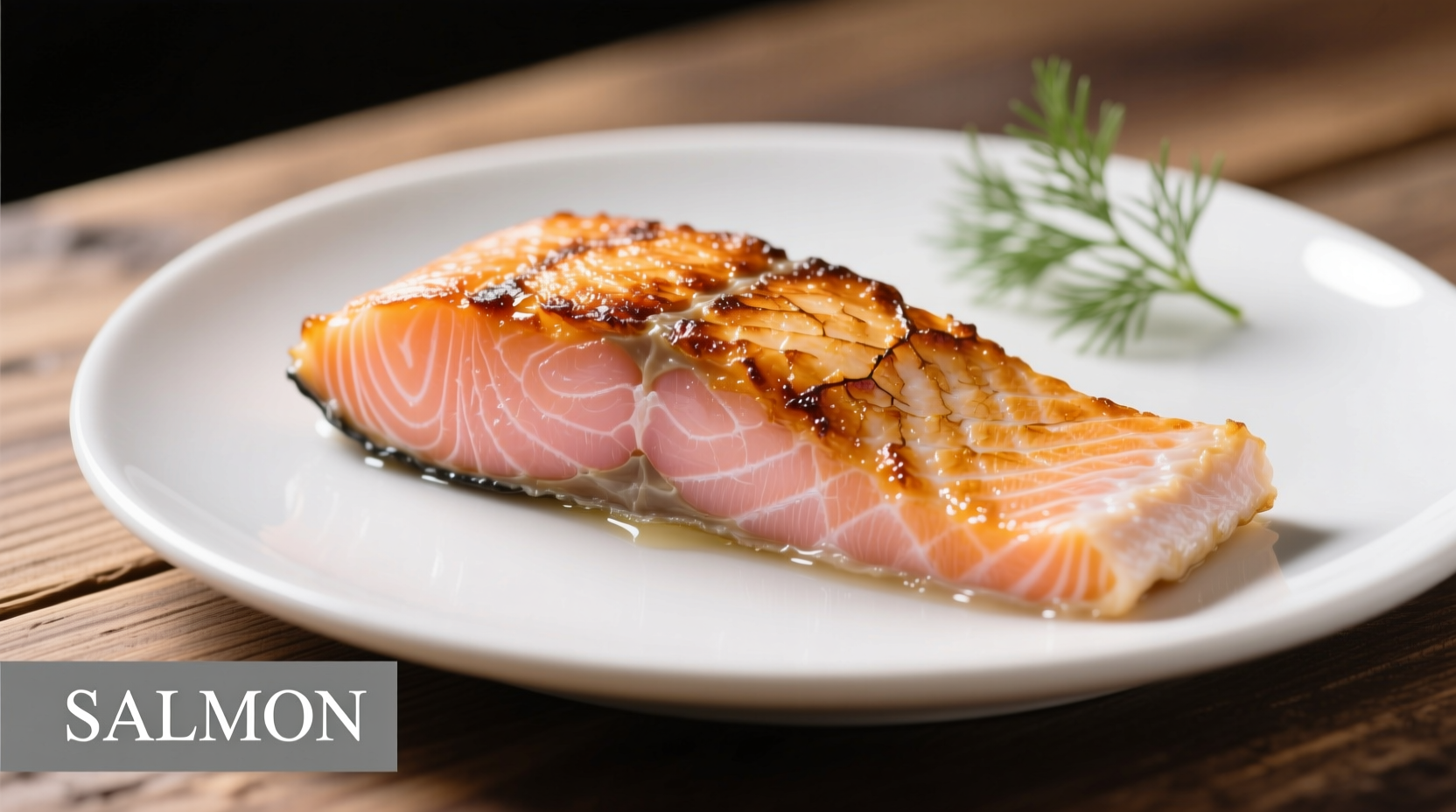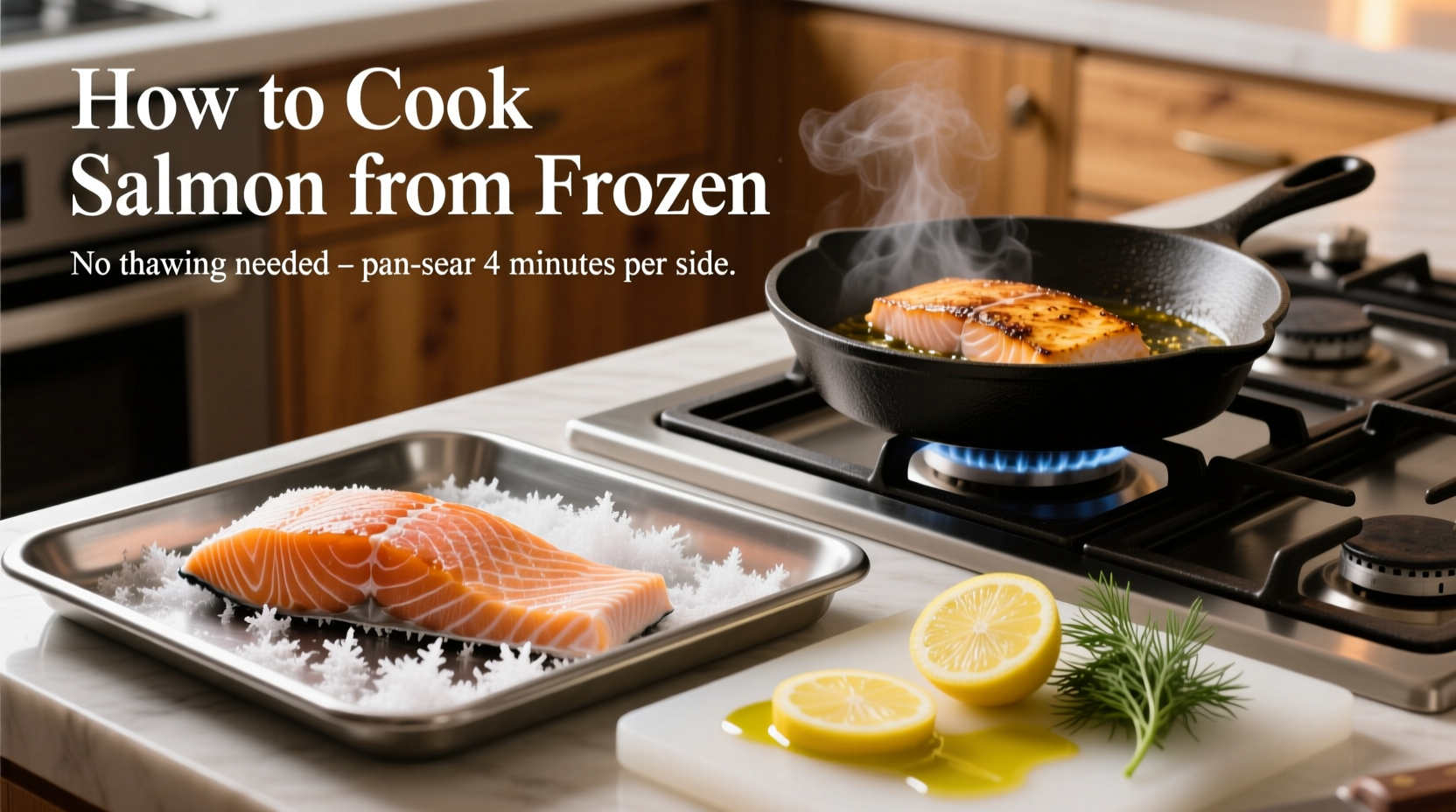Discover how to transform frozen salmon from your freezer into a restaurant-quality meal in under 25 minutes. This comprehensive guide eliminates the common misconception that salmon must be thawed before cooking, saving you valuable time while delivering moist, flavorful results every time. Whether you're a busy professional or spontaneous weeknight cook, these proven techniques work for all types of frozen salmon—wild-caught, farm-raised, skin-on or skinless.
Why Cooking Frozen Salmon Works
Modern freezing technology preserves salmon's cellular structure, allowing direct cooking without compromising safety or texture. The USDA Food Safety and Inspection Service confirms that cooking frozen fish is safe when proper temperature guidelines are followed. When cooking from frozen, the key is extending time by approximately 50% while maintaining appropriate heat levels to ensure thorough cooking without drying out the exterior.
| Cooking Method | Temperature | Frozen Salmon Time | Thermometer Reading | Best For |
|---|---|---|---|---|
| Oven Baking | 400°F (200°C) | 15-20 minutes | 145°F (63°C) | Multiple portions, hands-off cooking |
| Pan Searing | Medium-high heat | 6-8 minutes per side | 145°F (63°C) | Crispy skin, quick meals |
| Air Frying | 375°F (190°C) | 12-15 minutes | 145°F (63°C) | Crispy texture, minimal oil |
Step-by-Step Cooking Process
Preparation Phase: Setting Up for Success
Remove salmon from packaging and pat thoroughly dry with paper towels—this critical step prevents steaming and promotes proper browning. Season generously with salt, pepper, and your choice of herbs. For pan-searing, bring fillets to near room temperature by resting 5-7 minutes while heating your skillet. Professional chefs recommend using an oven-safe skillet for seamless transition from stovetop to oven if needed.

Cooking Phase: Method-Specific Techniques
Oven Method (Most Forgiving)
Place seasoned salmon on a parchment-lined baking sheet. Bake at 400°F (200°C) for 15-20 minutes until the center flakes easily with a fork. For thicker cuts, tent with foil after 10 minutes to prevent overcooking edges. The FDA recommends checking internal temperature at the thickest part—145°F (63°C) indicates perfect doneness.
Pan Searing Method (Best Crispiness)
Heat oil in an oven-safe skillet until shimmering. Place salmon skin-side down (if applicable) and cook undisturbed for 5 minutes. Flip carefully and cook 3-5 minutes more. For thicker cuts, transfer skillet to a 375°F (190°C) oven for 3-5 additional minutes. This two-stage approach prevents burnt exteriors while ensuring thorough cooking.
Finishing Phase: Resting and Serving
Allow salmon to rest 3-5 minutes after cooking—this critical step lets juices redistribute for maximum moisture. Serve immediately with lemon wedges and fresh herbs. For enhanced flavor, brush with a compound butter during the final minute of cooking.
Troubleshooting Common Issues
Soggy texture? Excess moisture comes from insufficient drying before cooking. Always pat frozen salmon completely dry. Uneven cooking? This occurs when temperature is too high—maintain consistent medium heat. Difficulty getting crispy skin? Press skin gently against the hot pan for the first 30 seconds to establish contact.
Safety Considerations and Limitations
While cooking frozen salmon is generally safe, certain situations require thawing first:
- When using delicate preparation methods like ceviche or gravlax
- If the salmon has freezer burn covering more than 25% of the surface
- When cooking extremely thick cuts (over 2 inches)
The USDA Food Safety and Inspection Service emphasizes that frozen salmon must reach an internal temperature of 145°F (63°C) for safe consumption. Always verify with an instant-read thermometer inserted into the thickest part. Leftovers should be refrigerated within two hours and consumed within three days.
Pro Tips for Perfect Results
Season frozen salmon just before cooking—salting too early draws out moisture. For enhanced flavor penetration, create small incisions in thicker fillets. When pan-searing, start skin-side down even if cooking frozen, as this creates a protective barrier against overcooking. For oven cooking, placing lemon slices underneath the salmon elevates it slightly for more even heat distribution.











 浙公网安备
33010002000092号
浙公网安备
33010002000092号 浙B2-20120091-4
浙B2-20120091-4